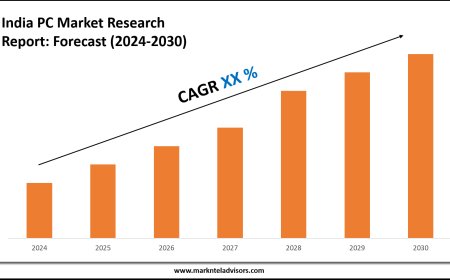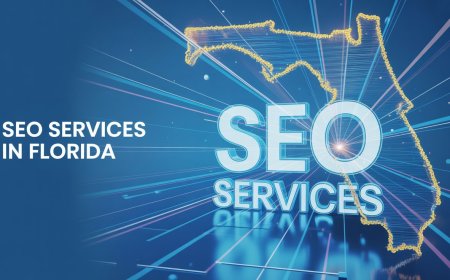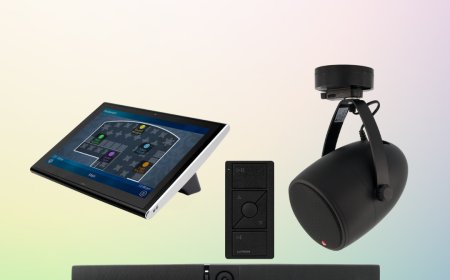Best Small Business Marketing Strategies for Growth

Starting and growing a small business needs more than just passion. It requires smart planning, consistency, and the right marketing approach. Using the best small business marketing strategies can help your brand grow, attract customers, and compete with larger companies. This guide covers actionable tactics that suit tight budgets and local markets while keeping your long-term growth in mind.
Why Small Business Marketing Matters
Marketing gives your business a voice in the market. It connects you with potential customers and builds your reputation. For small businesses, the right strategy can drive awareness, trust, and conversions without spending heavily.
Unlike big brands with large budgets, small businesses must focus on efficiency. The goal is to get high returns with low investments, especially during early growth phases. Thats where selecting the best small business marketing approach becomes essential.
Identify Your Target Audience First
Knowing your audience saves time and money. Before launching any campaign, answer these questions:
-
Who are your ideal customers?
-
What are their pain points?
-
Where do they spend time online?
Use customer surveys, online forums, or social media to understand behaviors and interests. Once you know your audience, tailor your content and platforms accordingly.
Build a Strong Online Presence
Even if your business serves a local market, having a digital presence is a must. It builds trust and makes your business accessible 24/7. Focus on the following:
Create a Google Business Profile
Claiming and optimizing your Google Business Profile improves your local visibility. It helps people find you on Google Maps and local searches. Make sure to:
-
Add complete business details
-
Upload clear photos
-
Collect and respond to reviews
-
Post regular updates
Build a Mobile-Friendly Website
Your website is the center of your digital marketing. Ensure it is:
-
Easy to navigate
-
Fast loading
-
Mobile responsive
-
Search engine optimized
Add a blog section to publish content regularly. This helps improve your visibility on search engines and brings in organic traffic.
Use Social Media the Smart Way
Social media is not just for branding. Its a cost-effective tool to reach, engage, and convert your audience. Choose the platform where your audience is most active:
-
Facebook and Instagram for visual content
-
LinkedIn for B2B marketing
-
TikTok and YouTube Shorts for video engagement
-
Twitter for quick updates and news
Use consistent branding, engage with followers, and share valuable content. Scheduling posts through tools like Buffer or Hootsuite saves time and ensures consistency.
Focus on Local SEO
For small businesses, best small business marketing must include local SEO. It boosts your ranking for location-specific searches like near me or [service] in [city].
Key actions to take:
-
Add your business to local directories like Yelp, Bing Places, and Foursquare
-
Use location-based keywords in content and metadata
-
Get backlinks from local websites or news platforms
-
Encourage happy customers to leave reviews on Google and other platforms
Create High-Quality Content Regularly
Content marketing is a long-term strategy with high returns. Good content educates your audience, improves SEO, and builds authority.
Content types to consider:
-
Blog posts
-
How-to guides
-
Infographics
-
Email newsletters
-
Videos
-
Case-based tutorials
Write for your target audience in a simple tone. Focus on their problems and offer solutions through your products or services. Use your best small business marketing keyword naturally in blog titles and subheadings to enhance visibility.
Run Budget-Friendly Paid Campaigns
You dont need a big budget to run ads. Platforms like Facebook and Google allow small campaigns with daily spending limits.
Start small by targeting:
-
Local audience
-
Specific interests or demographics
-
Retargeting past website visitors
-
People similar to your current followers
Monitor the results regularly. A/B test your headlines, visuals, and calls to action (CTAs). Choose what performs well and refine your ads accordingly.
Build an Email List and Use It Right
Email marketing is still one of the highest-ROI strategies. Start collecting emails from day one. Offer something valuable like:
-
Discounts
-
Free guides
-
Early access to products
-
Loyalty rewards
Once you have a list, segment your audience based on interest or behavior. Send targeted emails with relevant offers, updates, or tips.
Use tools like Mailchimp, ConvertKit, or MailerLite to automate your campaigns.
Partner With Other Local Businesses
Networking with other local businesses opens new opportunities. You can:
-
Co-host events
-
Create bundle deals
-
Share promotions
-
Collaborate on giveaways
This approach helps both parties grow while keeping costs low. It's a powerful yet often overlooked method in the best small business marketing toolkit.
Encourage and Leverage User-Generated Content
Happy customers are your best marketers. Ask them to share photos, reviews, or testimonials. You can repost these on your website or social media. It builds trust and increases engagement.
Tips to boost user content:
-
Run hashtag campaigns
-
Offer incentives like discounts or shout-outs
-
Showcase top users on your homepage or stories
This not only builds brand credibility but also keeps your audience engaged.
Stay Consistent With Your Brand Voice
Branding is more than logos and colors. Its your business identity. Use a consistent tone, message, and design across all platforms.
Brand consistency builds trust. It helps people recognize your business faster and connect emotionally. Use branded templates for posts and emails to maintain visual appeal.
Monitor Performance and Make Data-Driven Decisions
You cannot improve what you dont track. Use these tools to measure your progress:
-
Google Analytics for website traffic
-
Google Search Console for SEO performance
-
Meta Business Suite for Facebook and Instagram metrics
-
Email analytics for open and click rates
Set monthly goals. Track what works and adjust your strategy. Data helps you understand trends, audience preferences, and campaign effectiveness.
Keep Up With Industry Trends
Marketing changes fast. Stay updated with:
-
Algorithm updates
-
New tools or platforms
-
Content trends
-
Consumer behavior shifts
Follow industry blogs, join online groups, and attend webinars. Keeping up helps you adapt your strategies and stay ahead of your competitors.
Final Thoughts on Growing Through Smart Marketing
Choosing the best small business marketing strategy is not about copying others. Its about knowing your audience, focusing your efforts, and staying consistent. Start with the basics, test different channels, and track your results. Over time, even small actions lead to strong results.






































